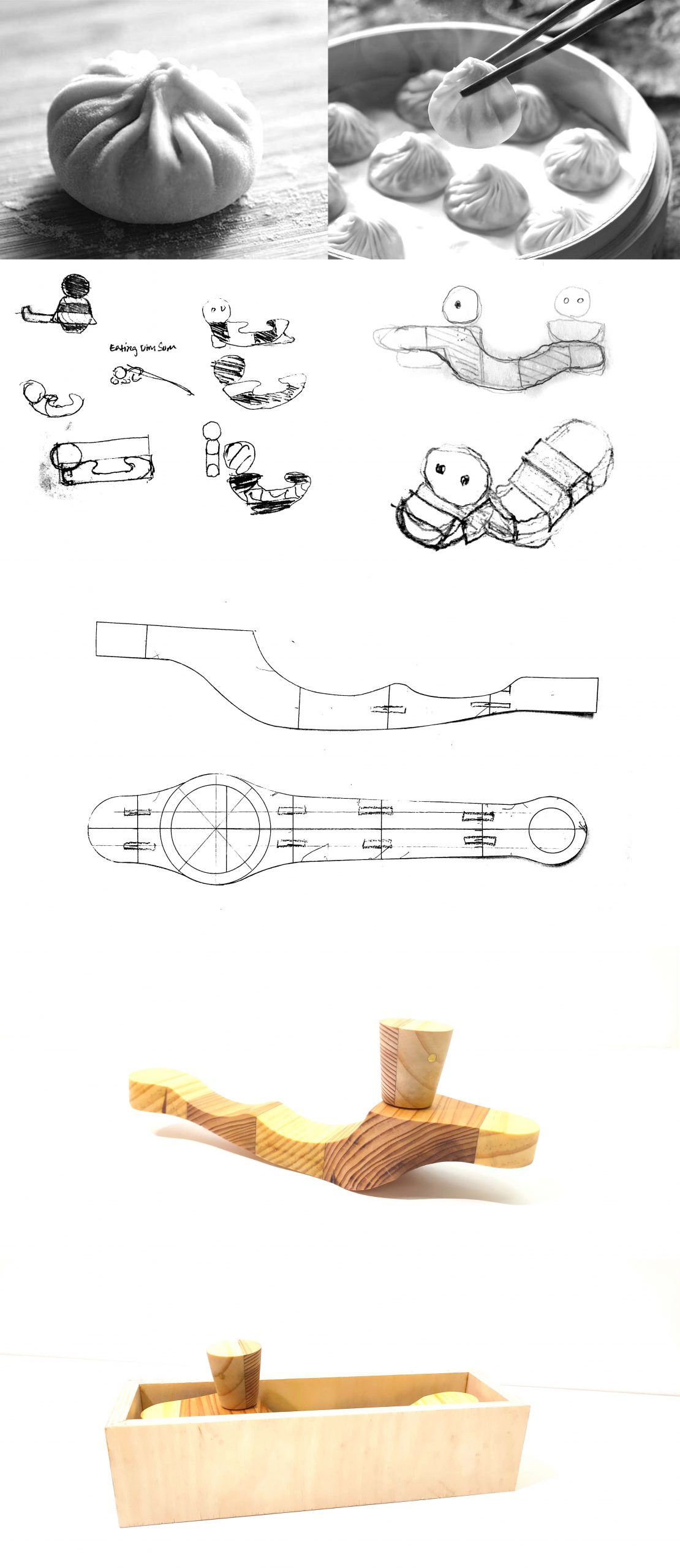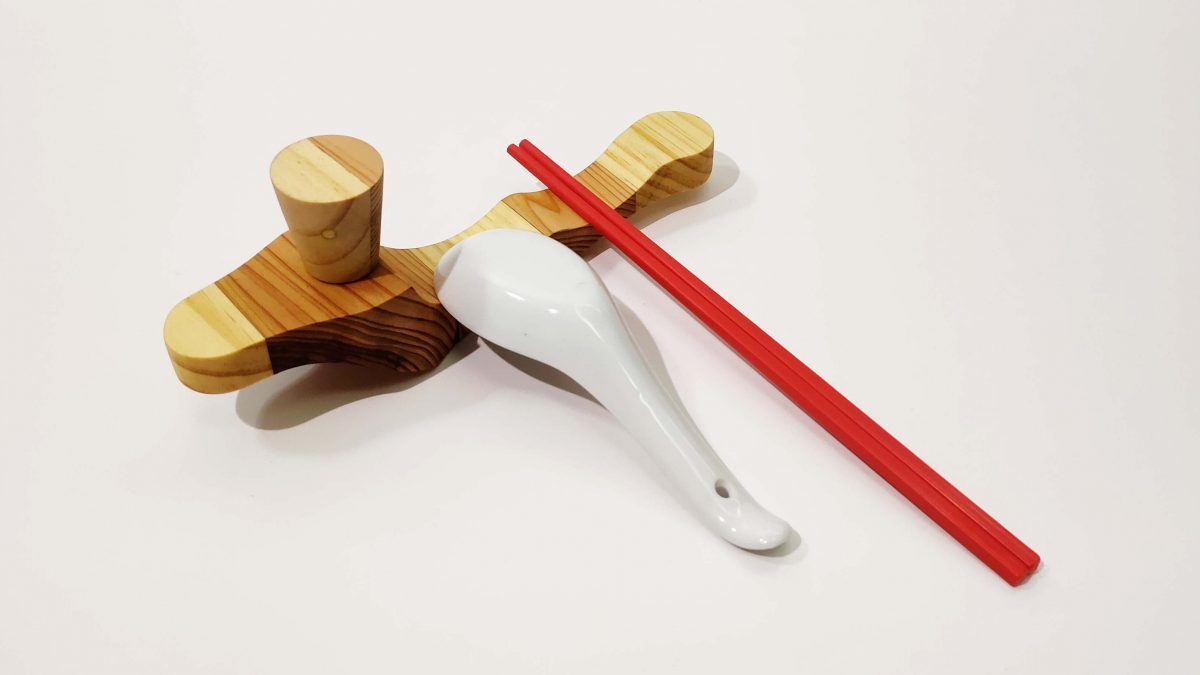
Product: Chopstick Holder & Housing
Medium: Reclaimed Pine
Finish: hand-waxed
Chopstick Holder (on the top): W 50 x L 235 x H 77 mm.
Housing (on the bottom): W 79 x L 262 x H 72 mm.
Course: DR2009 Products in Asian Cultural Context (AY 2019-20, Semester 1)
Project’s title: Wooden doll and its housing
Designed & made by: Tan Ying Hui (U1730916L)
Photographed by: Tan Ying Hui (2019)
Project’s description
The way of Dim Sum dining is a wholistic one. Served in small bamboo baskets, they are usually shared between families and friends. It is a gathering that speaks of camaraderie and togetherness. The imbalanced form of the product plays on the interactivity between its own kind; in that physical action of support and reliance.
To form a cohesive set with the previous rolling pin project, the cone shape outline and layering is repeated here, in the head and silhouette. There are echoes in the curves to visually tie the pieces together. The lid is matched with care to allow the grain of wood to flow naturally from left to right.
Using the alternative sections of light and dark colours, their size and placement creates additional features to the doll such as hair and clothing.
Although the doll is designed to be used in multiples, where the higher tip rests on another’s tail, it may also be used independently. Despite the slight instability, it will not tip to an extreme due to the shallow curved base. In fact, the weight of the utensils balances the doll evenly.
Full Documentation: YING HUI’s 2PE Journal DR2009_NOV19
Prev: Rolling Pin




